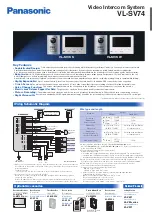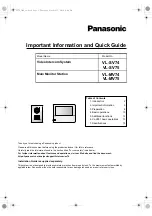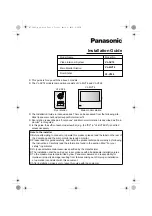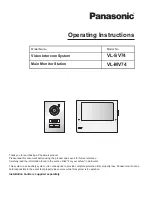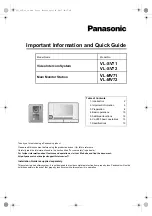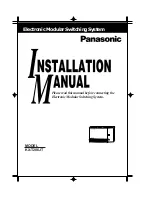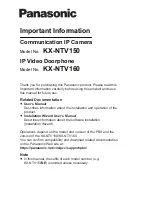
Listening rooms are not ideal. Because of room geometry and construction there will be areas with severe peaks at
some frequencies and severe troughs at others. If you site loudspeakers in such areas the response will be highly
non-flat. It is easier to treat high frequency irregularities by the use of drapes, soft furnishings etc., but very hard to
do the same at bass frequencies due to the very long wavelengths.
To help locate standing waves in your listening room, one idea is to sit in the listening seat and recruit a friend with a
deep voice to speak as he moves around the area where you propose to site your subwoofer - you will soon find out
where
to site it! Where the voice sounds most natural is a good place to start.
Although the subwoofer's bass output is enhanced by walls or corners, so often is coloration. The floor will influence
the sound. The surface under the subwoofer should be stable and unobstructed. If the carpet is very thick, consider
placing the subwoofer on a solid surface such as a marble slab. If you place the subwoofer where it amplifies the
irregularities of the room or the main speakers the result will be bloated, coloured bass. If acoustic guitar and male
voice sounds coloured when the subwoofer is operating at normal level and less coloured if the subwoofer volume
is reduced, you need to address the positioning first before adjusting any controls.
Make sure that all loudspeakers are connected in phase. If there is a doubt about the way
the loudspeakers are connected, check their phasing by playing a mono source - the sound should appear from a
point midway between the front loudspeakers. If this position is indefinite, reverse the connections to one speaker.
Correctly connected loudspeakers give a definite centre sound source with fuller bodied tenor and bass registers.
Phase at very low frequencies is not straightforward to detect. Initially we
suggest you temporarily set the low pass filter to highest setting and the phase to 0º and play some bass heavy music in Stereo
through the main speakers and the subwoofer. From the listening position, switch the phase between 0º and 180º. The
setting which appears to give the greater bass output is correct. Now follow the instructions below for setting the
Crossover filter.
10.4,10.5, 10.6 and 10.7)
not
Loudspeaker Phasing:
Setting the Phase of the Subwoofer:
Setting Loudspeaker Sizes:
Front Loudspeakers:
Centre and Surround channels:
Crossover Control:
Setting levels:
Most digital AV Processors ask you to specify the size of speakers in the various
channels. These are usually ‘Large’ or ‘Small’. This sets the bass management for the system.
r
e
ll
a
m
S
.'
e
g
r
a
L
'
o
t
t
e
s
e
b
n
a
c
(
s
r
e
k
a
e
p
s
d
u
o
l
g
n
i
d
n
a
t
s
r
o
o
l
r
e
g
r
a
l
e
h
T
loudspeakers (including stand mounted units) should be set to 'Small' The 10.3 should be set to small. If the bass is
excessive, then set the loudspeaker to ‘Large’.
The D10. CM centre channel speaker should be set to ‘LARGE’. The other centre
channel speakers and the surround channel speakers should be set to ‘SMALL’ so that bass from these channels will
be directed to the subwoofer. Set the ‘Subwoofer’ option on the processor to 'On’ or 'Yes'.
If you are using a digital AV processor the initial subwoofer setting should be 85Hz as the
processor will have its own bass management system. After experimenting with various sources you may need to
adjust the Subwoofer Crossover settings. Try to ensure the subwoofer blends into the sound stage - the more
invisible the subwoofer component of the sound field is, the better.
Once the loudspeaker settings have been finalised, put the AV amplifier into its “Test” mode (see
instructions supplied with your processor.) Adjust the levels until all channels are reproduced at equal loudness.
When adjusting the subwoofer output level avoid setting too high a level or you will swamp the sound with bass
which be tiring to listen to and may limit the subwoofer’s ability to respond to large bass transients. Set a sensible
level going
the subwoofer from the processor.
into
Fine Tuning Procedures
Set up the subwoofer with all tone controls and filters on your amplifier or processor set ‘flat’.
14
D10 DFS Surround Loudspeakers
D10 SR Surround Loudspeakers
The speakers should ideally be sited 600 mm-1.5 metres above the listening position and 2.5-3.5
metres apart, central to the listener and behind the listening position, preferably on a rear wall. If
the listening position is some distance from a rear wall, the speakers may be mounted on opposite
side walls but always behind the listening position.
Ensure that the wall is sound and can support the product. Drill two 5mm holes in the wall 220mm
apart. Fix a suitable No 8 round head screw firmly into each hole using appropriate wall plugs.
Leave a stub of 5mm protruding from the wall.
Connect the loudspeakers. Align the holes in the mounting brackets over the screw and carefully
lower the unit onto the screws. The speaker should now be securely attached with the spacers
resting against the wall. Now connect the speakers to the amplifier.
Note: As an alternative, the D10 DFS can be shelf or stand mounted. The badge on the D10 DFS
can be rotated to match the orientation of the loudspeaker.
Before mounting the loudspeakers, establish the location using the same criteria as for the D10. DFS.
The D10 SR is supplied with four mounting feet for shelf or stand mounting.
The terminal panel has a built in mounting slot for wall fixing.
Ensure the wall is sound and can easily support the weight of the loudspeakers. Drill and fix a No. 8
screw and suitable wall plug at each chosen location. The screw should protrude about 5mm from the
wall. Connect the cable to the speaker. Align the keyhole slot over the screw. Pull gently down to secure
the speaker.
Wall mounting the D10 SR:
Positioning Surround Loudspeakers
X2
220 mm
Alternative 5.1 System Layouts with D10 DFS Surrounds
FRONT
LEFT
FRONT
RIGHT
SUB
WOOFER
CENTRE
SURROUND
RIGHT
SURROUND
LEFT
FRONT
LEFT
FRONT
RIGHT
SUB
WOOFER
CENTRE
SURROUND
RIGHT
SURROUND
LEFT
SURROUND
RIGHT
SURROUND
LEFT
FRONT
LEFT
FRONT
RIGHT
SUB
WOOFER
CENTRE
FRONT
LEFT
FRONT
RIGHT
SUB
WOOFER
CENTRE
SURROUND
RIGHT
SURROUND
LEFT
Alternative 5.1 System Layouts with D10 SR Surrounds
7
Содержание Programme 105
Страница 1: ......












